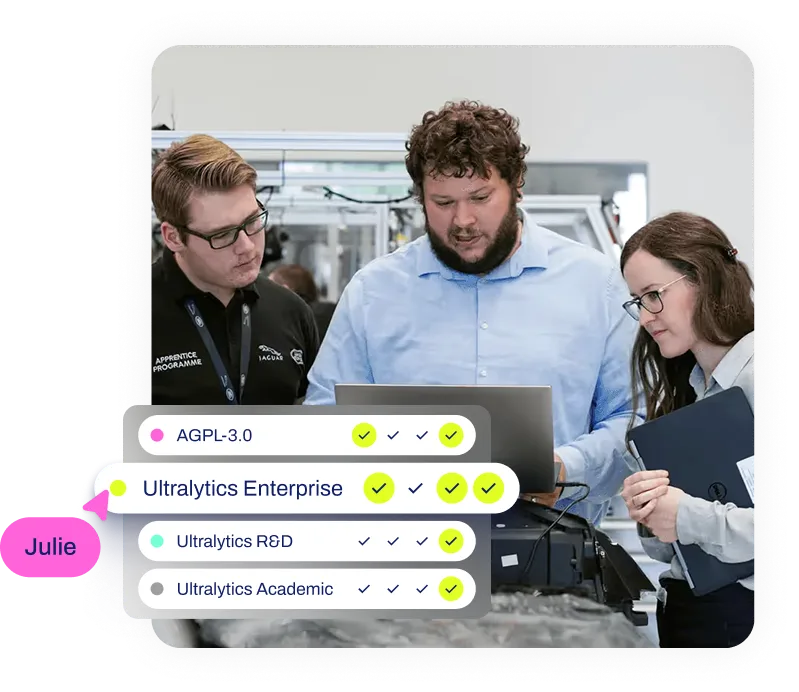Data Augmentation
Enhance your machine learning models with data augmentation. Discover techniques to boost accuracy, reduce overfitting, and improve robustness.
Data augmentation is a critical technique in machine learning (ML) used to artificially increase the size and diversity of a training dataset. This is achieved by creating modified, yet realistic, versions of existing data samples. The primary goal is to improve the performance and robustness of AI models, particularly in computer vision (CV), by exposing them to a wider variety of conditions during training. This helps prevent overfitting, where a model learns the training data too well but fails to generalize to new, unseen data, ultimately leading to higher model accuracy.
How Data Augmentation Works
In computer vision, data augmentation involves applying a series of transformations to images. These transformations are designed to simulate real-world variations that a model might encounter after deployment. Common techniques include:
- Geometric Transformations: These alter the spatial orientation of an image. Examples include random rotations, scaling, translations (shifting), cropping, and flipping (horizontal or vertical). These teach the model to be invariant to the object's position and orientation.
- Color Space Transformations: These modify the color properties of an image. Adjustments to brightness, contrast, saturation, and hue make the model more resilient to changes in lighting conditions.
- Advanced Techniques: More complex methods involve altering image content more significantly. These can include adding random noise (like Gaussian noise), applying blurring effects, or using methods like Mixup, which creates new images by linearly combining two existing ones, and Cutout, which randomly removes regions of an image. You can learn more about these methods in The Ultimate Guide to Data Augmentation.
Many deep learning frameworks, like PyTorch and TensorFlow, provide tools for data augmentation. Specialized libraries like Albumentations offer a vast collection of high-performance augmentation techniques and are integrated with models like Ultralytics YOLO11 to diversify training data seamlessly.
Real-World Applications
Data augmentation is a standard practice across many domains to build more reliable AI systems.
- AI in Healthcare: In medical image analysis, datasets are often small due to patient privacy regulations and the rarity of certain diseases. To train a model for detecting tumors in scans, augmentation techniques like rotation, scaling, and brightness changes create a more diverse set of training examples. This helps the model accurately identify anomalies regardless of variations in imaging equipment or patient positioning, improving diagnostic reliability.
- AI for Automotive: Developing robust object detection systems for autonomous vehicles requires data from countless driving scenarios. Instead of collecting data for every possible condition, augmentation can simulate different weather (e.g., adding synthetic rain or snow), lighting (day, dusk, night), and occlusions (e.g., a pedestrian partially hidden by another car). This makes the vehicle's perception system more dependable in unpredictable real-world environments.
Other significant applications include AI in manufacturing for quality control and AI in agriculture for detecting crop diseases under varying field conditions.
Data Augmentation vs. Related Concepts
It is important to distinguish data augmentation from other data-related techniques.
- Synthetic Data: While both methods enhance datasets, they operate differently. Data augmentation modifies existing real data. In contrast, synthetic data generation creates entirely new, artificial data from scratch using simulations or generative models like GANs. While augmentation expands variance around observed data, synthetic data can create novel scenarios not present in the original dataset, a concept explored in this overview of synthetic data in computer vision.
- Data Cleaning: Data cleaning is a part of the broader data preprocessing pipeline that focuses on identifying and correcting errors, inconsistencies, and inaccuracies in a dataset. Its goal is to improve data quality. Data augmentation, on the other hand, is about increasing data quantity and variety. A clean dataset is the ideal starting point before applying augmentation.
- Transfer Learning: This technique involves using a model pre-trained on a large benchmark dataset like ImageNet and then fine-tuning it on a smaller, task-specific dataset. Data augmentation is often used during the fine-tuning stage to further improve performance and prevent overfitting on the new data.
Platforms like Ultralytics HUB streamline the entire model training process, incorporating data augmentation as a key step to help users build powerful, state-of-the-art vision AI models.






